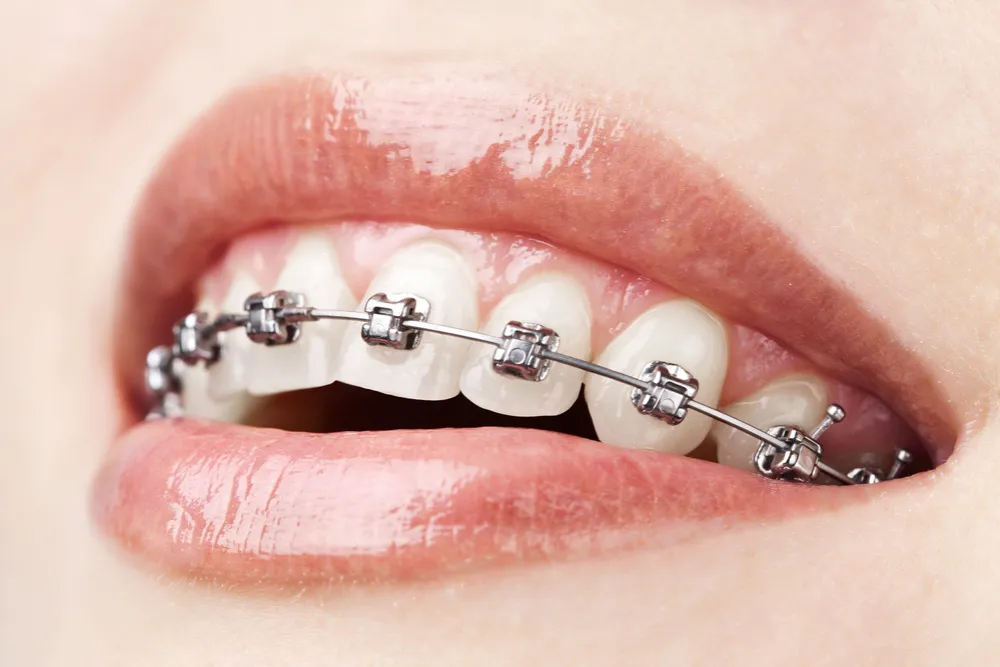Orthodontic Braces

Outline
- Introduction to Orthodontic Braces
- What Are Orthodontic Braces?
- Importance of Orthodontic Braces
- Types of Orthodontic Braces
- Metal Braces
- Ceramic Braces
- Lingual Braces
- Clear Aligners
- How Do Orthodontic Braces Work?
- The Science Behind Braces
- The Process of Getting Braces
- Benefits of Orthodontic Braces
- Improved Oral Health
- Enhanced Appearance
- Boost in Self-Esteem
- Challenges and Considerations
- Common Issues Faced
- Pain and Discomfort
- Duration of Treatment
- Choosing the Right Type of Braces
- Factors to Consider
- Consultation with an Orthodontist
- Caring for Your Braces
- Daily Oral Hygiene
- Foods to Avoid
- Regular Check-ups
- Orthodontic Braces for Different Age Groups
- Children
- Teenagers
- Adults
- Cost of Orthodontic Braces
- Factors Affecting the Cost
- Insurance and Payment Options
- Myths and Facts about Orthodontic Braces
- Common Myths Debunked
- Facts You Should Know
- Life After Braces
- Retainers and Their Importance
- Maintaining Your New Smile
- Technological Advances in Orthodontics
- Innovations in Braces
- Future Trends
- Personal Experiences with Orthodontic Braces
- Stories from Patients
- Tips and Advice
- FAQs about Orthodontic Braces
- Conclusion
- Recap of Key Points
- Final Thoughts
Orthodontic Braces
Introduction to Orthodontic Braces
What Are Orthodontic Braces?
Orthodontic braces are dental tools employed to correct misaligned teeth and adjust jaw positioning. They exert constant pressure over an extended period to slowly shift teeth into their proper alignment. The ultimate goal is to improve oral function, enhance aesthetics, and promote better oral health.
Importance of Orthodontic Braces
Braces are more than just a means to a prettier smile. They play a crucial role in correcting dental issues that can lead to serious health problems if left untreated, such as difficulty in chewing, speech impediments, and increased risk of tooth decay and gum disease.
Types of Orthodontic Braces
Metal Braces
Metal braces represent the most conventional form of orthodontic treatment.. They consist of metal brackets and wires that are adjusted periodically to shift teeth into place. Modern versions are more comfortable and less conspicuous than their predecessors.
Ceramic Braces
Ceramic braces work much like metal braces but are crafted from clear or tooth-colored materials, allowing them to blend with the teeth and be less conspicuous. They are a popular choice among those looking for a more aesthetic option.
Lingual Braces
Lingual braces are attached to the backside of the teeth, making them invisible from the front. They offer a discreet option for those concerned about the appearance of braces, although they can be more challenging to clean and adjust.
Clear Aligners
Clear aligners, like Invisalign, are transparent, removable trays that gradually move teeth into alignment. They are popular for their invisibility and convenience, as they can be removed for eating and cleaning.
How Do Orthodontic Braces Work?
The Science Behind Braces
Braces work by applying continuous pressure to teeth, which gradually moves them in a specific direction. The pressure causes the bone to change shape as the teeth move, allowing for the adjustment and realignment of teeth over time.
The Process of Getting Braces
Getting braces typically involves several steps:
- Consultation: An initial appointment to assess dental issues and discuss treatment options.
- Imaging and Impressions: X-rays, photographs, and dental impressions are taken to create a detailed plan.
- Application: Braces are attached to the teeth, and the orthodontist adjusts the wires to start the treatment process.
- Regular Adjustments: Follow-up visits to adjust the braces and monitor progress.
- Removal: Once teeth are in the desired position, braces are removed, and retainers are provided to maintain alignment.
Benefits of Orthodontic Braces
Improved Oral Health
Teeth that are correctly aligned are simpler to clean, which lowers the chances of developing cavities and gum disease. Braces can also correct bite issues that cause wear and tear on teeth, preventing long-term damage.
Enhanced Appearance
A straight, well-aligned smile significantly enhances facial aesthetics, leading to improved self-confidence and social interactions.
Boost in Self-Esteem
Many individuals experience a boost in self-esteem after orthodontic treatment, as they feel more comfortable and confident with their appearance.
Challenges and Considerations
Common Issues Faced
While braces offer numerous benefits, they also come with challenges. Common issues include initial discomfort, difficulty in eating certain foods, and the need for meticulous oral hygiene to prevent plaque buildup around the brackets.
Pain and Discomfort
It’s normal to experience some pain and discomfort, especially after adjustments.
You can use over-the-counter painkillers and orthodontic wax to ease these problems.
Duration of Treatment
The length of time one needs to wear braces varies based on the complexity of the case. On average, treatment lasts between one to three years.
Choosing the Right Type of Braces
Factors to Consider
When choosing braces, consider factors such as age, severity of dental issues, aesthetic preferences, and budget. Each type of braces has its pros and cons, and a thorough discussion with an orthodontist can help in making the best choice.
Consultation with an Orthodontist
A consultation with an orthodontist is crucial for determining the most suitable treatment plan. They can provide expert advice on the best type of braces for your specific needs.
Caring for Your Braces
Daily Oral Hygiene
Maintaining excellent oral hygiene is essential with braces. This includes brushing after every meal, flossing daily, and using interdental brushes to clean around brackets and wires.
Foods to Avoid
Certain foods can damage braces or make cleaning difficult. Avoid hard, sticky, and chewy foods like popcorn, nuts, and gum. Choose softer foods that are simpler to chew and less likely to cause problems.
Regular Check-ups
Regular orthodontic check-ups are necessary to monitor progress and make necessary adjustments. Skipping appointments can prolong treatment time and affect the final results.

Orthodontic Braces for Different Age Groups
Children
Early initiation of orthodontic treatment can avert the development of more severe problems in the future. Braces for children often aim to guide proper jaw growth and alignment while they are still developing.
Teenagers
Adolescence is frequently the period when orthodontic treatment is sought most often. At this age, most permanent teeth have erupted, and jaw growth can be guided more predictably.
Adults
It’s never too late for braces. Adult orthodontics can correct long-standing dental issues and improve oral health. Options like ceramic braces and clear aligners are popular among adults for their discretion.
Cost of Orthodontic Braces
Factors Affecting the Cost
The cost of braces depends on various factors, including the type of braces, the complexity of the case, the length of treatment, and geographic location.
Insurance and Payment Options
A number of dental insurance policies provide coverage for a portion of orthodontic procedures. Additionally, most orthodontists offer payment plans to make treatment more affordable.
Myths and Facts about Orthodontic Braces
Common Myths Debunked
There exist various misconceptions about braces that may lead to undue concern. For instance, many believe that braces are only for kids, or that they are excessively painful, both of which are untrue.
Facts You Should Know
Grasping the realities can aid in making well-informed choices. For example, modern braces are more comfortable and effective than ever, and there are many discreet options available for all ages.
Life After Braces
Retainers and Their Importance
After braces are removed, wearing retainers is crucial to maintain the new position of teeth. Skipping retainers can lead to teeth shifting back to their original position.
Maintaining Your New Smile
Maintaining proper oral hygiene and attending regular dental check-ups are vital to preserving the results achieved with braces.
Technological Advances in Orthodontics
Innovations in Braces
Recent advancements include self-ligating braces, which reduce friction and treatment time, and 3D imaging for precise treatment planning.
Future Trends
Future trends in orthodontics may involve further improvements in aligner technology, faster treatment times, and more personalized treatment plans through AI and digital technology.
Personal Experiences with Orthodontic Braces
Stories from Patients
Hearing about others’ experiences can be encouraging and informative. Many patients share stories of increased confidence and satisfaction with their results.
Tips and Advice
Practical tips from those who have gone through the process include advice on dealing with discomfort, maintaining oral hygiene, and making the most of the orthodontic experience.
FAQs about Orthodontic Braces
- What duration is required for wearing braces? The duration of wearing braces varies depending on individual dental conditions. Usually, the treatment duration ranges from one to three years. Your orthodontist will give you a more precise estimate based on your specific needs.
- Do braces hurt? Braces may cause discomfort, especially after they are first applied or adjusted. This discomfort typically diminishes within a few days. You can use pain relievers available and orthodontic wax to alleviate any discomfort or irritation.
- Can adults get braces? Yes, adults can get braces. Orthodontic treatment is effective at any age, and there are many discreet options available, such as ceramic braces and clear aligners, which are popular among adults.
- How do I care for my teeth with braces? It’s vital to uphold exceptional oral hygiene while wearing braces. This includes brushing after every meal, flossing daily, and using interdental brushes or water flossers to clean around brackets and wires. Regular dental check-ups are also important.
- Will braces affect my ability to play sports or musical instruments? Braces should not significantly impact your ability to play sports or musical instruments. However, wearing a mouth guard during sports is recommended to protect your teeth and braces. With musical instruments, you might need a short adjustment period, but you should be able to play as usual.
Conclusion
Orthodontic braces are a transformative dental treatment that can significantly enhance oral health and boost self-confidence. By understanding the various types of braces, how they work, and the benefits they offer, you can make an informed decision about undergoing orthodontic treatment. Although braces come with certain challenges, the end result—a beautiful, healthy smile—is well worth the effort. Whether you’re a child, teenager, or adult, it’s never too late to achieve the smile you’ve always wanted.
